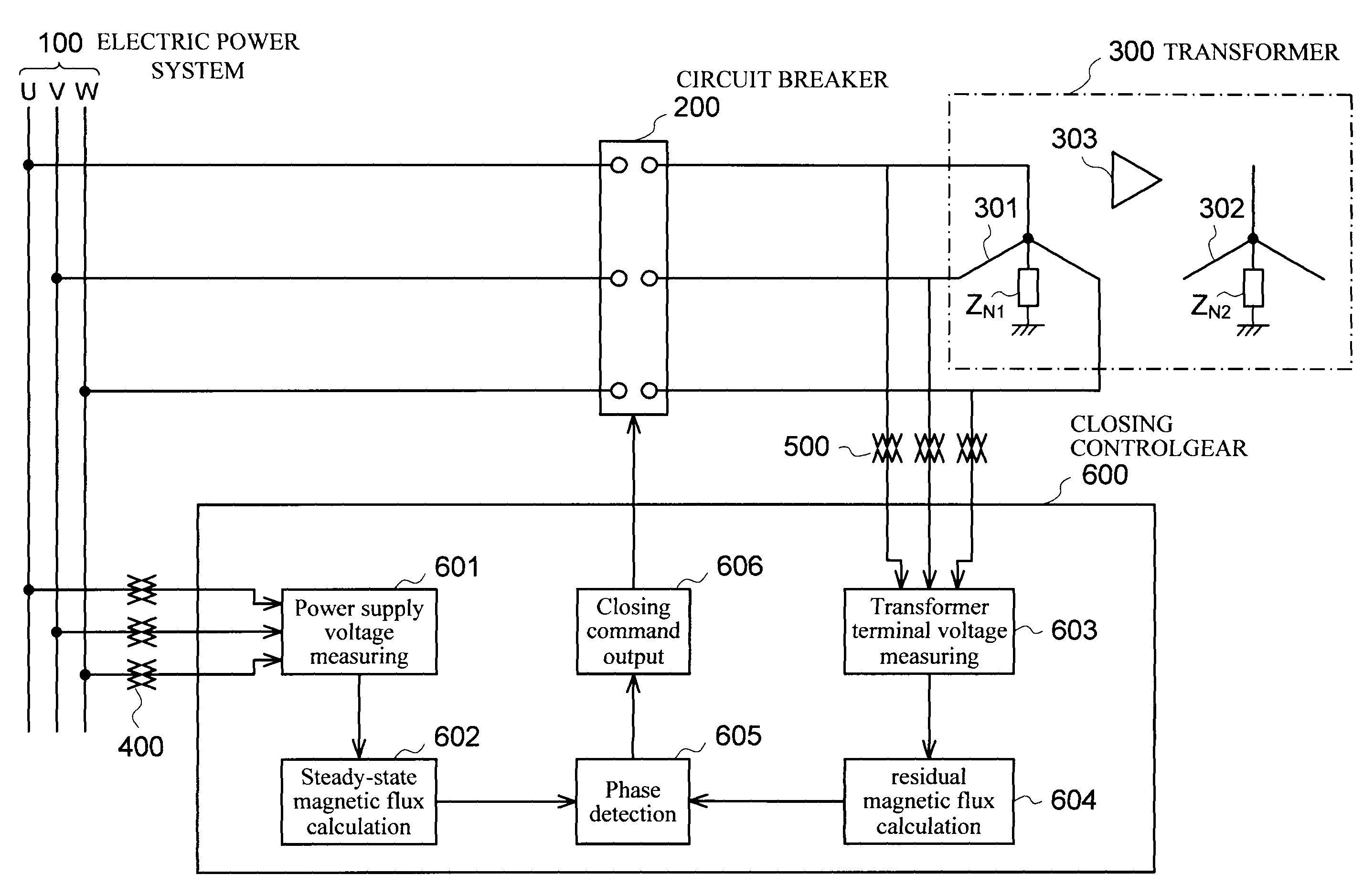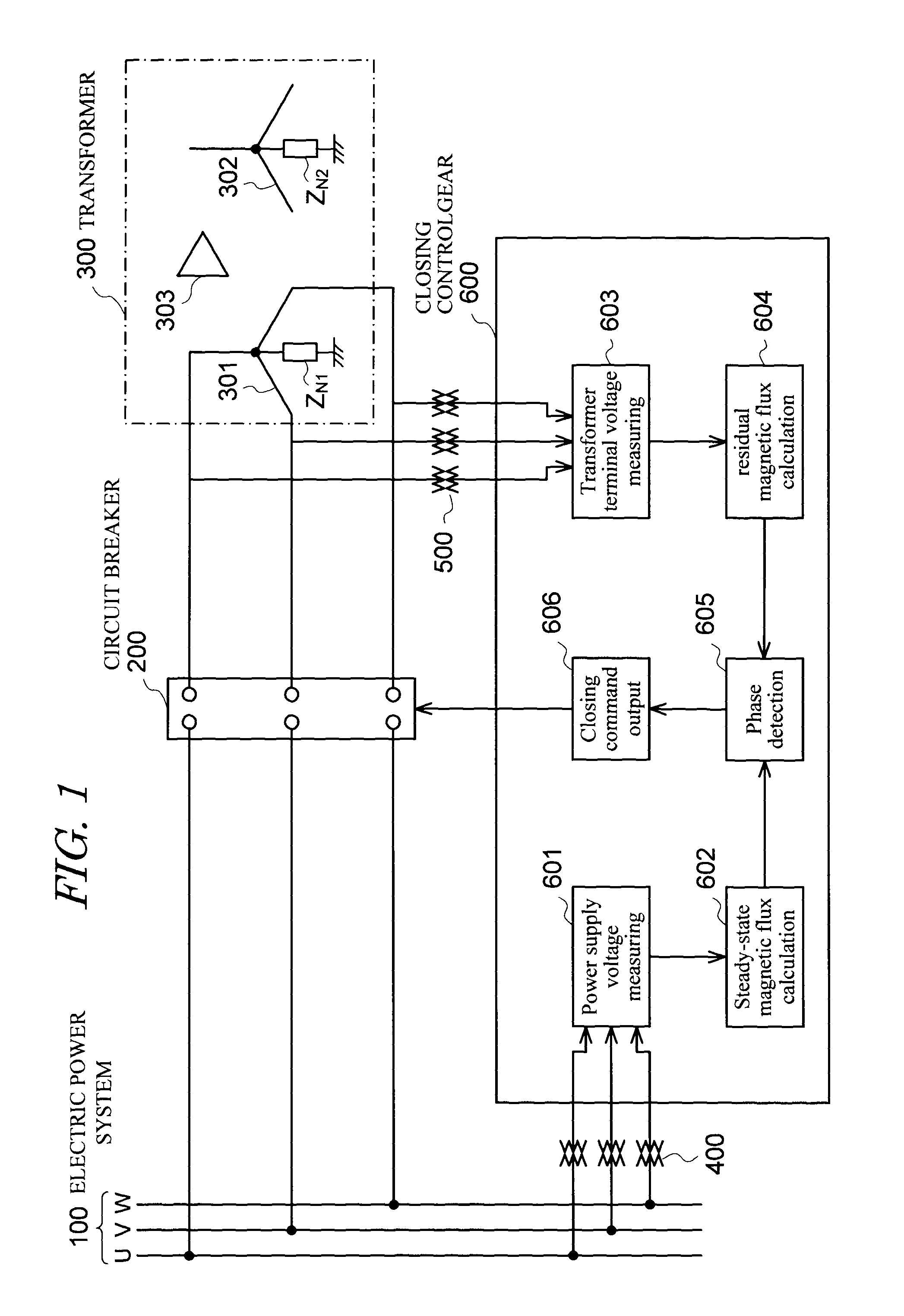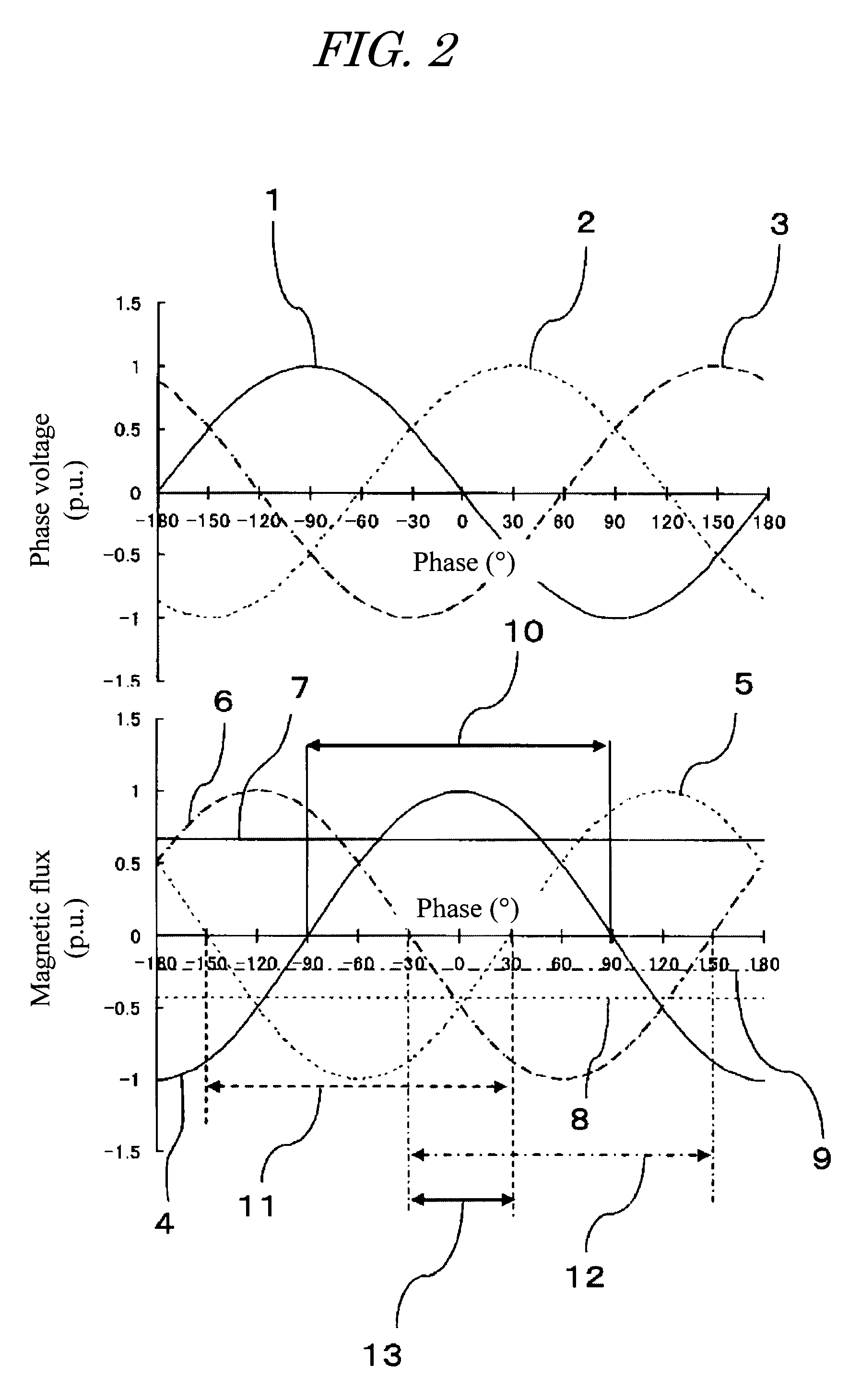Magnetizing inrush current suppression device and method for transformer
a suppression device and transformer technology, applied in the direction of electric generator control, emergency protective arrangements for limiting excess voltage/current, magnetic bodies, etc., can solve the problem that the suppression method disclosed in non-patent document 1 cannot be applied, and the non-phase segregation operation-type circuit breaker cannot be phase segregated, etc. problem, to achieve the effect of accurate calculation
- Summary
- Abstract
- Description
- Claims
- Application Information
AI Technical Summary
Benefits of technology
Problems solved by technology
Method used
Image
Examples
embodiment 1
(Embodiment 1)
[0081]FIG. 1 to FIG. 4 are provided to explain Embodiment 1; in particular, FIG. 1 is a block diagram showing the connection relation between a three-phase transformer, a three-phase circuit breaker, and a magnetizing inrush current suppression device, FIG. 2 is a waveform diagram showing the relation between the power supply phase voltages, steady-state magnetic flux in the transformer, and residual magnetic flux in the transformer core, FIG. 3 is a waveform diagram showing the residual magnetic flux when a single-phase transformer is supplied with power using a single-phase circuit breaker, the closing phase, and the magnetic flux after supplying power, and FIG. 4 is a waveform diagram showing a case in which the relation between the power supply phase voltages, transformer steady-state magnetic flux, and transformer core residual magnetic flux is different from that in FIG. 1.
(Configuration)
[0082]In FIG. 1, 100 is a busbar of the power system (also called a power su...
embodiment 2
(Embodiment 2)
[0104]FIG. 5 to FIG. 7 are provided to explain Embodiment 2; FIG. 5 to FIG. 7 are waveform diagrams showing the relations between the phase voltages, steady-state magnetic flux and residual magnetic flux when energizing a three-phase transformer, and each assume cases in which the manner in which the residual magnetic flux remains is different. In Embodiment 2, the connection relation between the three-phase transformer, three-phase circuit breaker, and magnetizing inrush current suppression device is the same as the case of the above-described Embodiment 1, and so a block diagram corresponding to that of FIG. 1 is omitted.
(Configuration)
[0105]In Embodiment 2, the closing control device 600 is set such that the closing target point of the three-phase circuit breaker 200 is the point of intersection 22 of the steady-state magnetic flux and the residual magnetic flux for the phase with the smallest residual magnetic flux among the phases of the three-phase transformer 30...
embodiment 3
(Embodiment 3)
[0111]FIG. 8 to FIG. 10 explain Embodiment 3. In particular, FIG. 8 to FIG. 10 are waveform diagrams showing the relation between the phase voltage, steady-state magnetic flux, and residual magnetic flux at the time of energizing of a three-phase transformer; each assume cases in which the manner in which the residual magnetic flux remains is different. In Embodiment 3, the connection relation between the three-phase transformer, three-phase circuit breaker, and magnetizing inrush current suppression device is the same as the case of the above-described Embodiments 1 and 2, and so a block diagram corresponding to that of FIG. 1 is omitted.
(Configuration)
[0112]In Embodiment 3, the closing control device 600 is set such that the closing target point of the three-phase circuit breaker 200 is made the time at which the steady-state magnetic flux is at peak value in the phase with the largest residual magnetic flux at the time of energizing of the three-phase transformer, t...
PUM
| Property | Measurement | Unit |
|---|---|---|
| steady-state magnetic flux | aaaaa | aaaaa |
| phase-voltage | aaaaa | aaaaa |
| phase-to-phase voltage | aaaaa | aaaaa |
Abstract
Description
Claims
Application Information
 Login to View More
Login to View More - R&D
- Intellectual Property
- Life Sciences
- Materials
- Tech Scout
- Unparalleled Data Quality
- Higher Quality Content
- 60% Fewer Hallucinations
Browse by: Latest US Patents, China's latest patents, Technical Efficacy Thesaurus, Application Domain, Technology Topic, Popular Technical Reports.
© 2025 PatSnap. All rights reserved.Legal|Privacy policy|Modern Slavery Act Transparency Statement|Sitemap|About US| Contact US: help@patsnap.com



